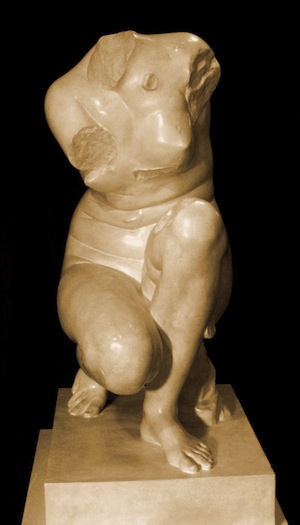Sculpture

Crouching Aphrodite
Hellenistic
replica: from the Louvre, Paris
in memory of: Nicholas Gyenes
date of the original: middle 3rd century BC
provenance of the original: found near Vienne in AD 1830; now in the Louvre, Paris
description: Aphrodite in crouching position. Head missing and right arm from middle of upper arm, left arm at shoulder. Small hand of another figure on back. Plaster replica; original by Diodalsas of Bithynia, probably of bronze, of which this is a Roman copy in Pyrimidal marble. On base: height 115 cm, width 74 cm, depth 51 cm.
The Crouching Aphrodite, sometimes called the Venus of Vienne, is a Roman copy of a Greek original. In fact, the original was freely copied with many variations.
The Greeks had long been preoccupied with the beauty of the male form (see: Apollo Lykeios; Hermes with the Infant Dionysus; Borghese Warrior or Gladiator), but it was only in the Hellenistic period that the female form became firmly established as an artistic subject. A descendant of the Aphrodite of Cnidos, after which Aphrodite was usually represented nude and at some point in the process of bathing (see also: Aphrodite Anadyomene; Aphrodite of Melos; Aphrodite of Arles), this Aphrodite is plump and seductive. She crouches, perhaps to receive a shower of water, and on her back are the remains of the left hand of Eros (see: Head of Eros) who flew nearby, possibly holding her mirror.